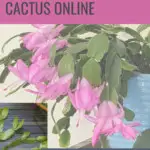
If you’re reading this, it’s likely you’ve recently received a shock. You found out your treasured Christmas cactus is, in fact, a Thanksgiving cactus.
So, you spent some time in therapy dealing with the rage brought on by retailers marketing them as Christmas cactuses. And from there, you were able to tackle the loss of the houseplant you thought you knew. Now, you’re working on acceptance.
But not really.
You still love your Thanksgiving cactus, but there’s a hole now.
You need a Schlumbergera buckleyi.
And that’s why you’re here. I will show you where to source true Christmas cactus cuttings and how to turn them into a thriving potted plant once you receive them. Here you will find true Schlumbergera healing.
(However, if you’re reading this and find yourself wondering if that plant in your living room is a true Christmas cactus, you’ll want to check this out.)
Why Is It So Hard to Find True Christmas Cactus in Stores?
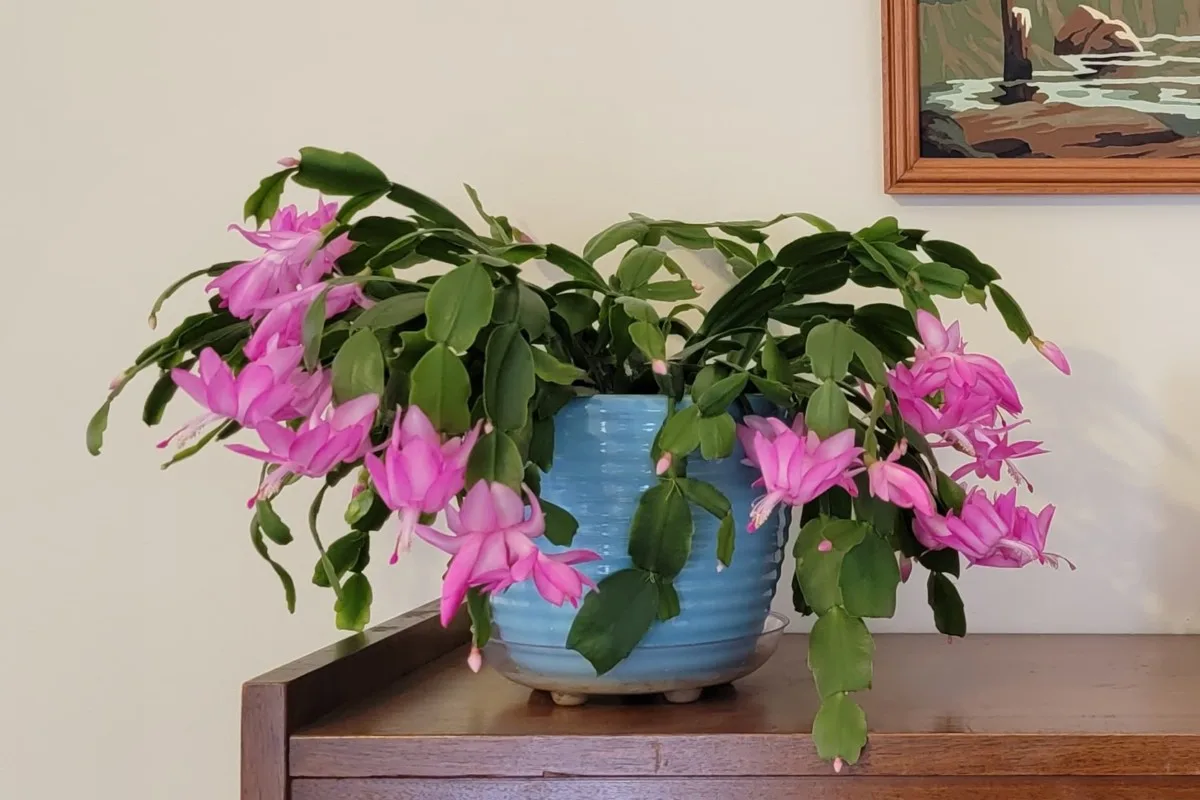
You may have noticed the only time stores carry Schlumbergera of any kind is a few weeks after Thanksgiving. Christmas or Thanksgiving cacti aren’t available all year because they only sell well when they are in bloom. And their name corresponds with when they typically bloom.
Over the years, the Christmas shopping season arrived in stores earlier each year, so the need for a holiday plant covered in buds ready to bloom was met by the earlier blooming Thanksgiving cactus. Schlumbergera truncata became the new “Christmas cactus.”
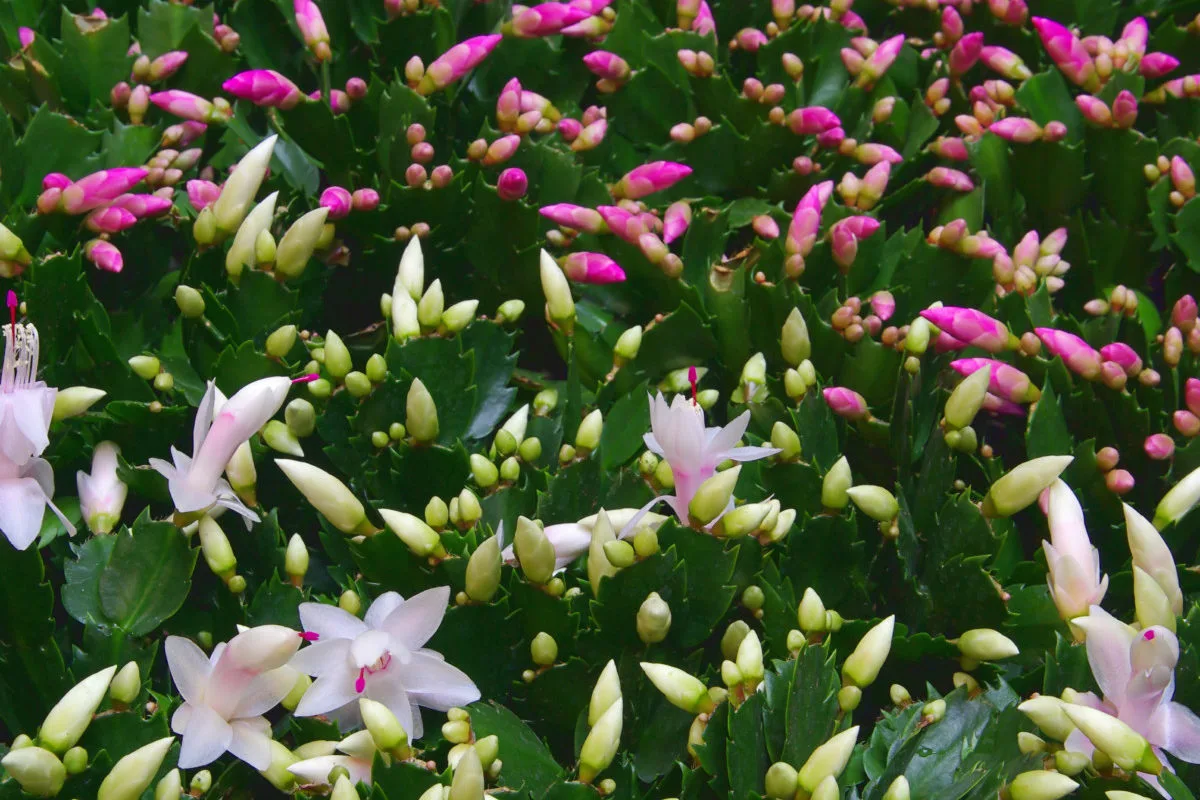
They come in many more colors than a true Christmas cactus and bud out, ready to ship when the holidays roll around. Unfortunately, no commercial nurseries bother growing and selling true Christmas cactuses anymore.
However, with the recent houseplant revival, there is a renewed interest in Schlumbergera buckleyi.
This has led to true Christmas cactus cuttings becoming a cottage industry online. If you’re willing to get a little dirt under your nails, you can start a plant of your own, and in a year or so, be the resident supplier of true Christmas cactus cuttings to your friends and family.
Where to Get a True Christmas Cactus
Always Look at Home First
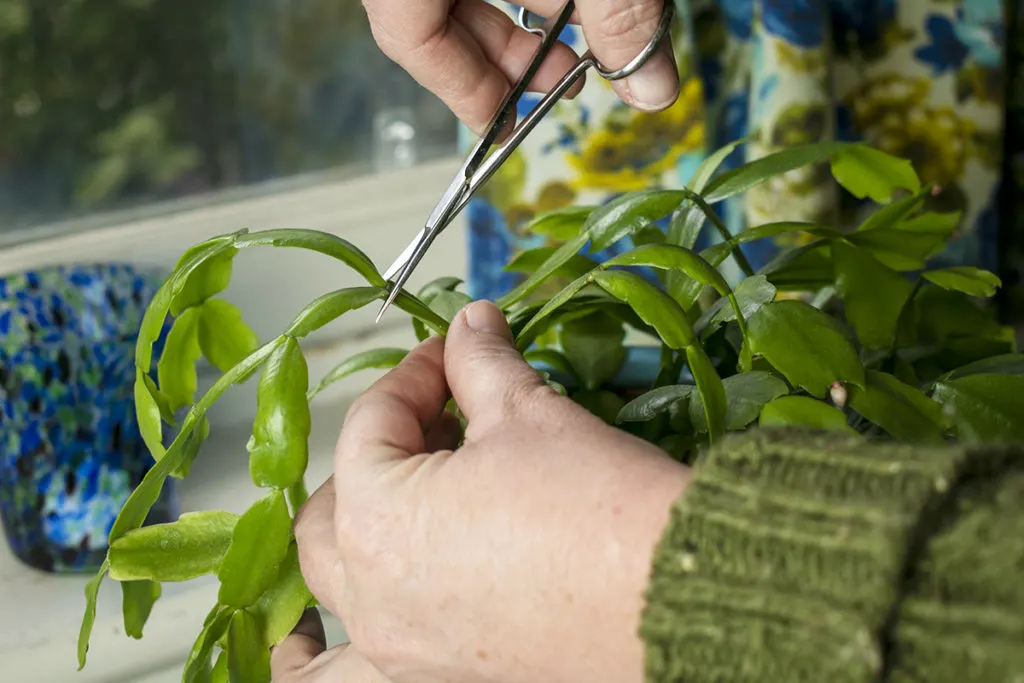
The easiest way to get your hands on a true Christmas cactus is to ask for cuttings from someone who already has one and start your own. Ask around – friends, family, coworkers, your book club, etc. You may be surprised at who in your life has a large, healthy Christmas cactus at home.
You may also find all the people in your life who think they have a Christmas cactus that’s actually a Thanksgiving cactus.
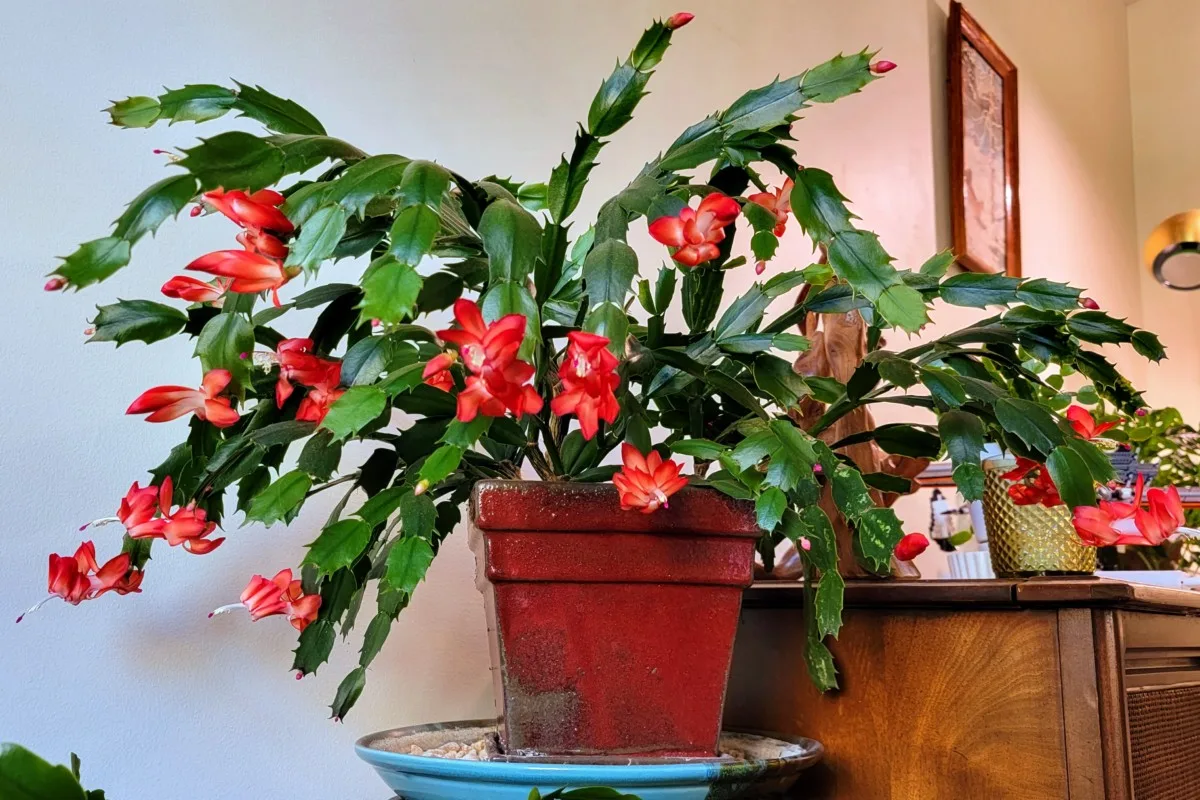
Don’t be shy! I once asked for cuttings from a local business when I was walking by and saw their massive Schlumbergera buckleyi in the window. Plant people are usually quite happy to share.
Sourcing cuttings locally is ideal, as they don’t have to travel through the postal system.
Depending on where you live, and the time of year, they may not survive the trip if you purchase cuttings online. It could be too cold, or they can be mishandled and arrive damaged beyond saving. It’s worth putting in the detective work to find someone locally with a Schlumbergera buckleyi.
Ask for 4-6 cuttings of at least three segments long for the best start; if you can get longer segments, all the better. Have your friend wrap the cuttings in a damp paper towel and put them in a plastic bag.
Purchasing True Christmas Cactus Cuttings Online
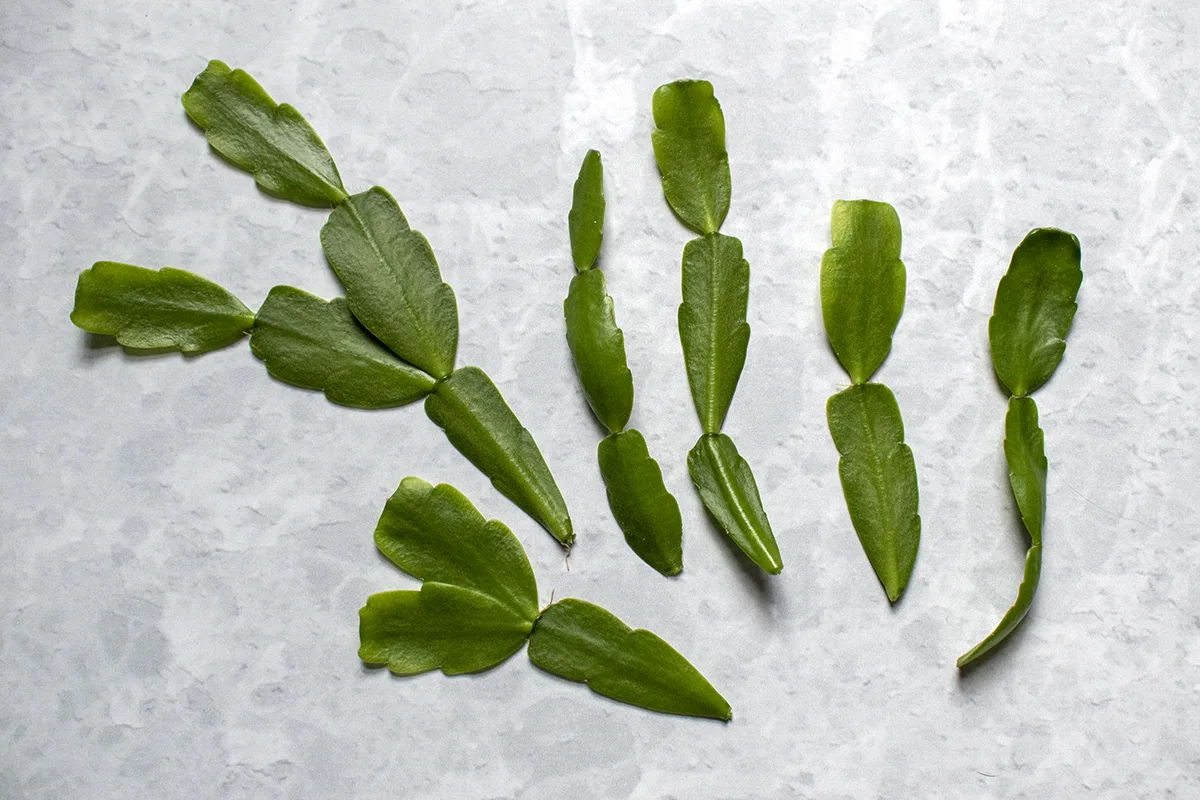
As I mentioned, it may be hard to find a potted Christmas cactus online, but it’s incredibly easy to purchase Christmas cactus cuttings these days. So, if you’ve looked high and low among friends and family and struck out, it’s eBay and Etsy to the rescue.
Like many online purchases, if you’re an uninformed consumer, you can end up with something other than what you wanted – like another Thanksgiving cactus.
I’m going to walk you through everything you need to know to successfully purchase true Christmas cactus cuttings online and root them successfully.
Sourcing Cuttings on eBay and Etsy
It’s as simple as typing “Schlumbergera buckleyi cutting” into the search bar and gleaning the results. I’ve had great luck with both online retailers.
Ultimately, it all comes down to the individual seller you choose to purchase from.
I always check reviews before making a purchase. Look at the lowest-star reviews and see if there are any recurring issues with the seller. I rarely pay attention to one-off issues, but if you see a pattern of similar complaints, it’s best to look for a different seller.
Don’t Assume the Seller Knows the Difference Between True Christmas and Thanksgiving Cactuses
I can’t tell you the number of times I have found Thanksgiving cactus cuttings listed as true Christmas cactus cuttings. It’s up to you to read the description carefully and look at the photos.
Remember – Thanksgiving cactus segments have toothed edges, and true Christmas cactus segments are rounded with no teeth.
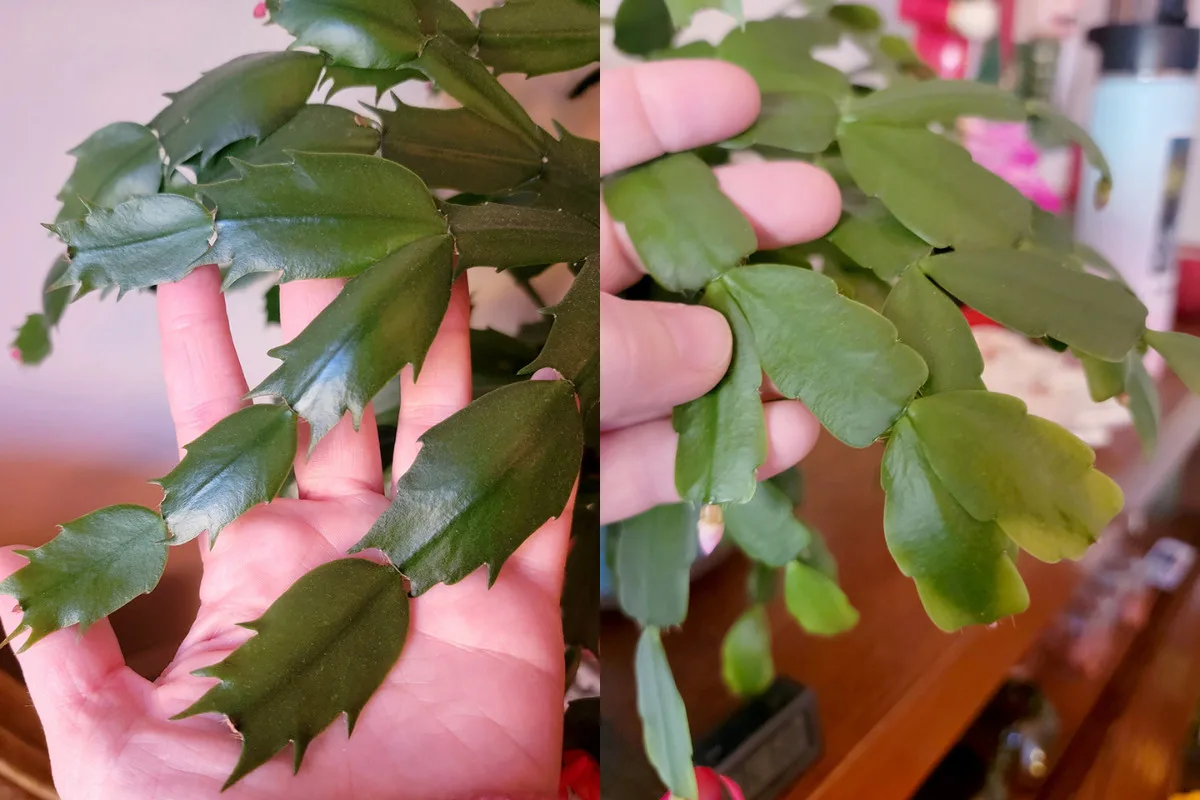
Many Online Sellers Post Photos of a Plant Even When Selling Cuttings
Again, be sure to read the description of the listing carefully. Many sellers post photos of the plant the cuttings are taken from, causing some buyers to think they are purchasing the plant rather than the cuttings.
If you have questions, message the seller before you purchase from them.
Keep Distance in Mind
When purchasing a live plant or cuttings online, it’s always a good idea to look for the seller closest to you. The shorter the distance your plant travels, the better shape it will be when it reaches you.
You can first sort the search findings on eBay by ‘distance nearest to you.’

With Etsy, it’s a little harder, but you can start by searching in your state. Try neighboring states next if you don’t find any sellers in your state.
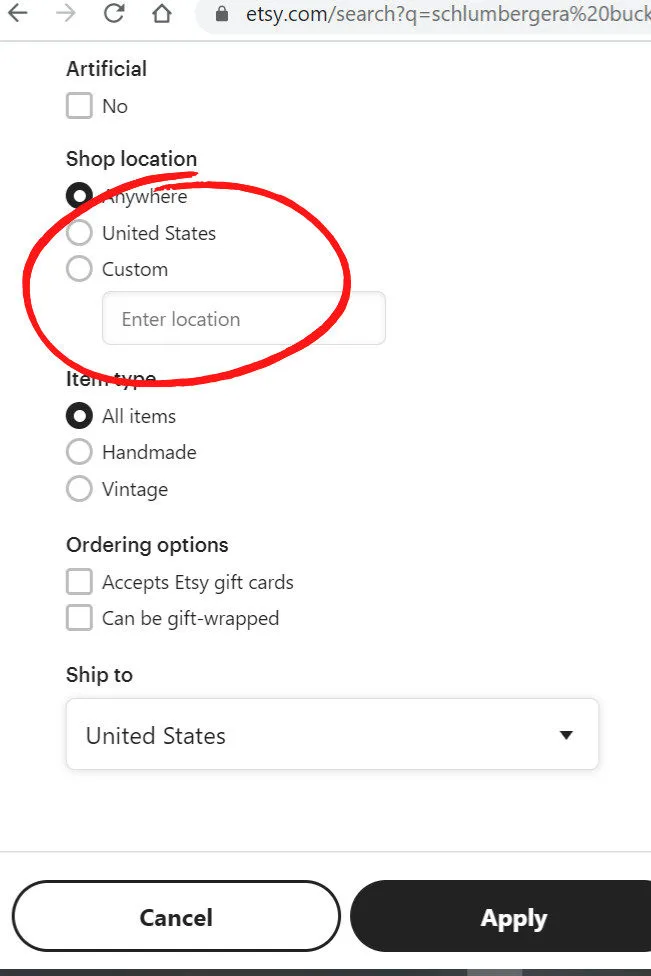
Take Into Account the Weather
If you’re purchasing cuttings in the winter and you live somewhere cold or are coming from a cold area, check to see if the seller offers a heat pack for an additional fee. Most sellers will not reimburse for damaged cuttings if the plant is ordered in extremely cold weather without adding a heat pack.
A good rule of thumb is if the cuttings are traveling in weather 55 degrees or lower, you should add a heat pack to the package.
Extremely hot temperatures can be just as damaging to tender Schlumbergera segments as cold. If you plan on ordering cuttings in the summer, keep an eye on the weather for the week ahead. Scorching temperatures and a long trip in the mail could leave you with parched cuttings beyond revival.
Make Sure You’re Around
Finally, don’t order cuttings if you’re going to be out of town. You’ll want to be there to get the cuttings prepped and potted as soon as they arrive.
What to do When Your Cuttings Arrive
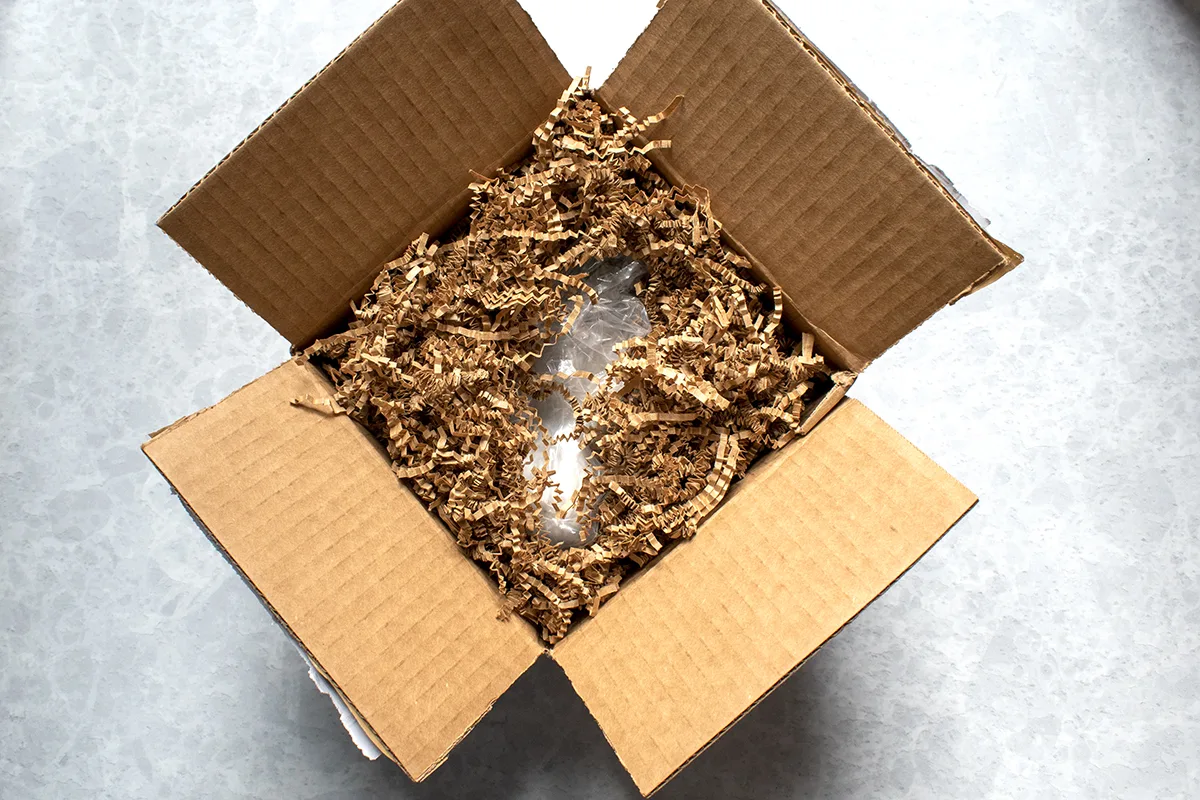
For the best possible chance of success, it’s always a good idea to have the materials you will need to root and repot the cuttings beforehand.
Materials:
- A small jar for water propagation
- A small pot with a drainage hole for soil propagation
- Coconut coir or another soilless mix
- Plastic baggy or plastic wrap
- A 6” or 8” pot with a drainage hole
- Orchid potting mix
- Succulent potting mix
- Butter knife or slim metal spreader
Unboxing Your Christmas Cactus Cuttings
When the cuttings arrive, bring the box inside and open it up. Remove the cuttings from whatever they were packaged in and inspect them. It’s okay if they’re a little wilted, but moldy, mushy or completely dried-out cuttings won’t grow.
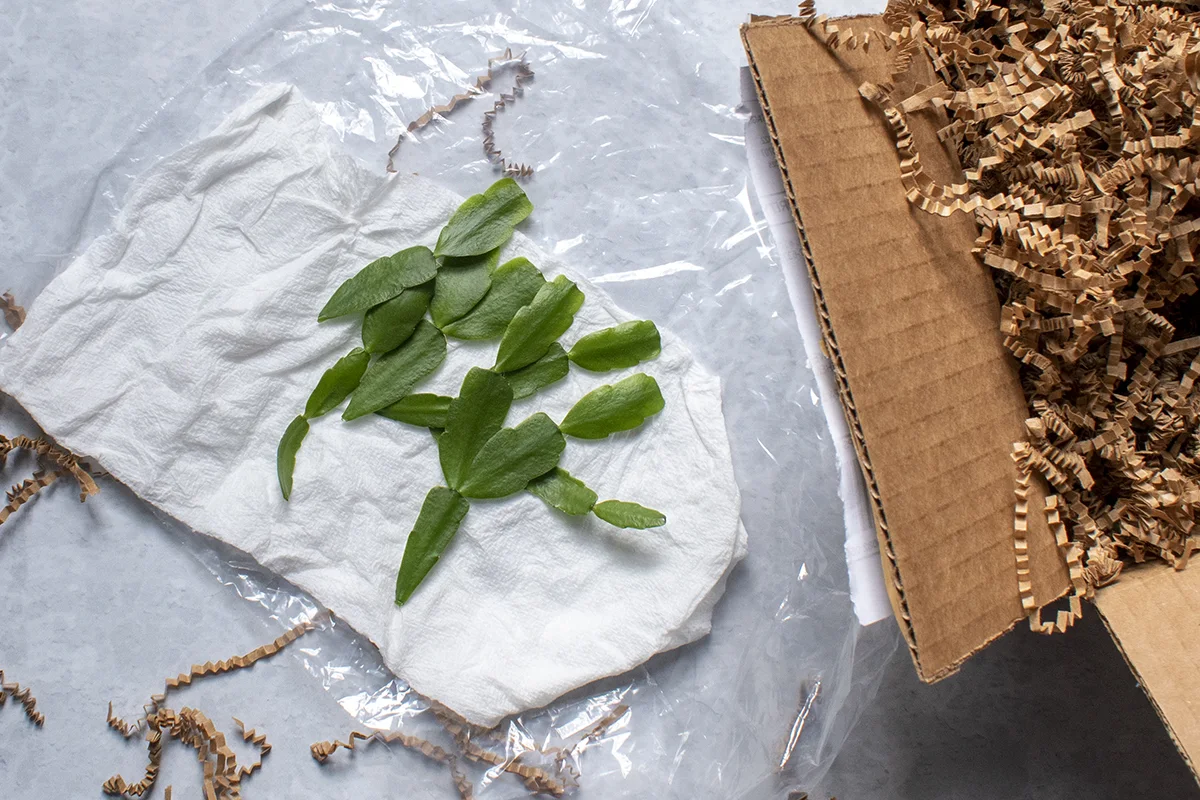
If you have an issue, it’s best to contact the seller right away. Don’t throw away the cuttings, as they may require photos of them before sending a replacement.
Lay the cuttings out on a dry paper towel for a few hours.
Rooted vs. Unrooted Cuttings
If you purchase rooted plants, they will have a developed root system at the bottom of the segments. You can pot these types of cuttings right away by following the directions provided later in the article.
However, if you have unrooted cuttings, you’ll need to root them first. You can do this in two different ways. The first is via water propagation; the second is by soil propagation. Both are pretty self-explanatory.
Water Propagation
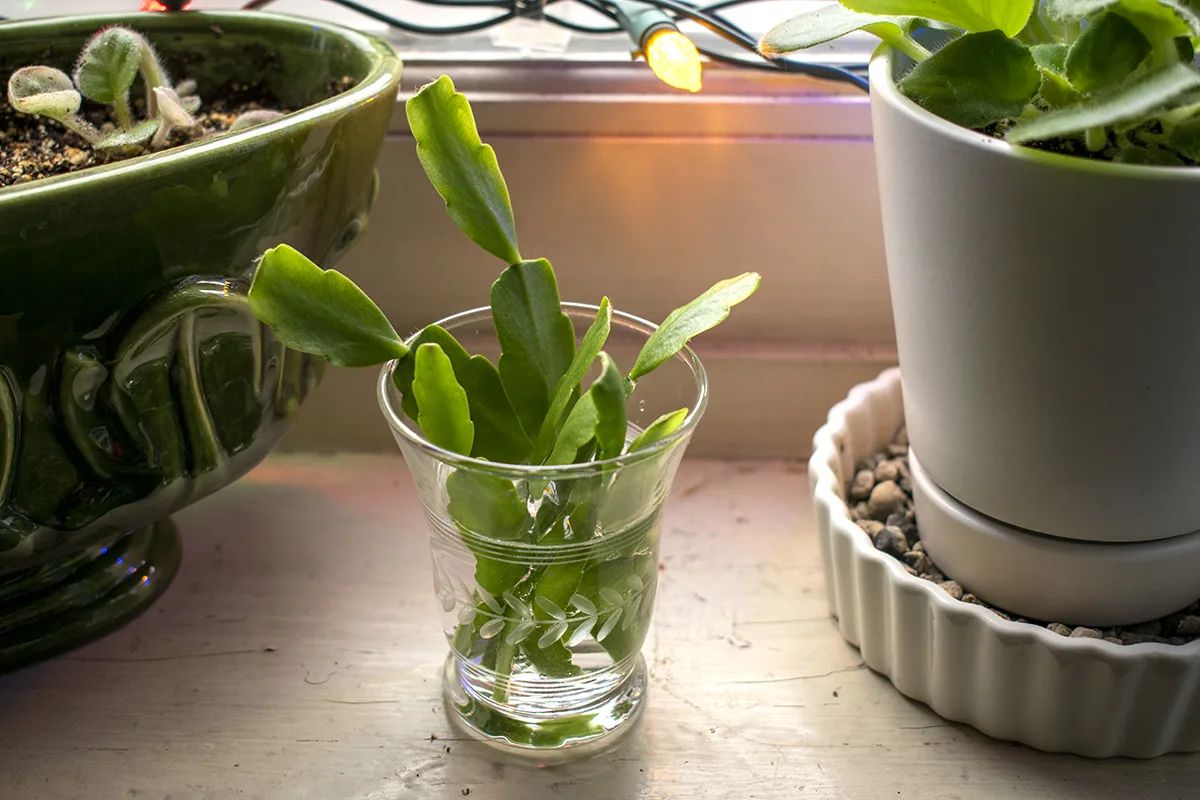
To propagate with water, place the segments in a small jar so that only the bottommost segment is submerged. Place the jar in a location that receives bright indirect sunlight and change the water weekly.
You should have roots growing from the segments in about two to three weeks. The cuttings are ready to repot when the roots are 2-3” long.
Soil Propagation
To propagate with soil, I find it’s best to use a soilless mix, such as coconut coir. (Funny, I know.) The process is similar, though.
Add coconut coir to a small pot with a drainage hole. Put the filled pot in the sink and soak the coconut coir with water. Let it drain completely before gently planting the Christmas cactus segments in the soil. Push each cutting into the coconut coir just past the shoulders of the bottommost segment.
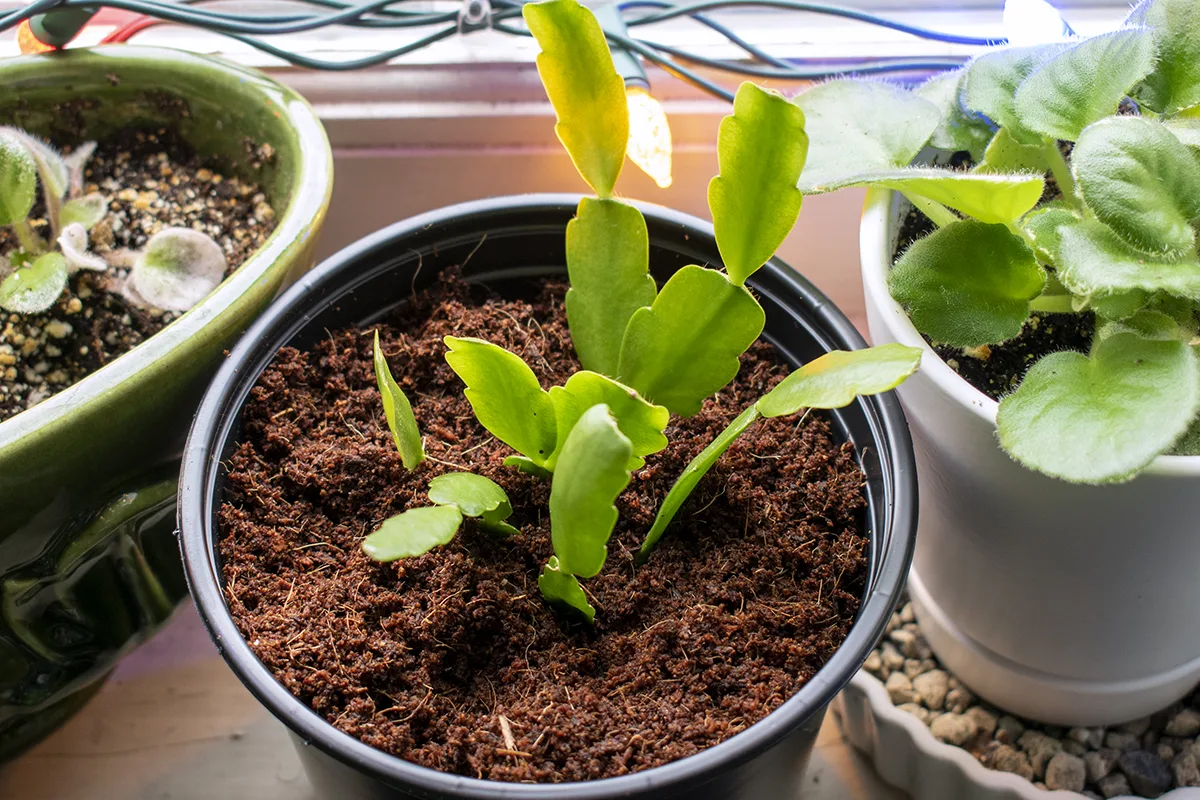
Once planted, put a clear plastic baggie over the pot to retain moisture. Again, place the cuttings somewhere they will receive bright, indirect light.
After about three weeks, gently pull on one of the segments, and you should feel the ‘grab’ of the developing roots. At this point, they’re ready to be repotted. If you can easily pull the cutting out of the soil, and it has no roots, give it another few weeks and try again.
Potting Up Rooted Cuttings
Once your cuttings are rooted, it’s time to put them in a more permanent home. As Christmas cactuses are succulents, you will need a quality potting mix for these types of plants. I have always had great results by mixing 2/3 succulent mix with 1/3 orchid mix. This mixture creates excellent drainage and aeration for the roots.
All of my Schlumbergeras are potted up this way and thriving.
Add the potting mix to a clean pot 6-8” in diameter. Push a butter knife or slim metal spreader down into the soil and pull it back, creating a gap to slide the rooted cutting into. Try to keep the cuttings close but not on top of each other; you’ll want them clustered towards the center of the pot. Continue in this manner until all of the cuttings are planted. Gently press the potting mix around the cuttings.
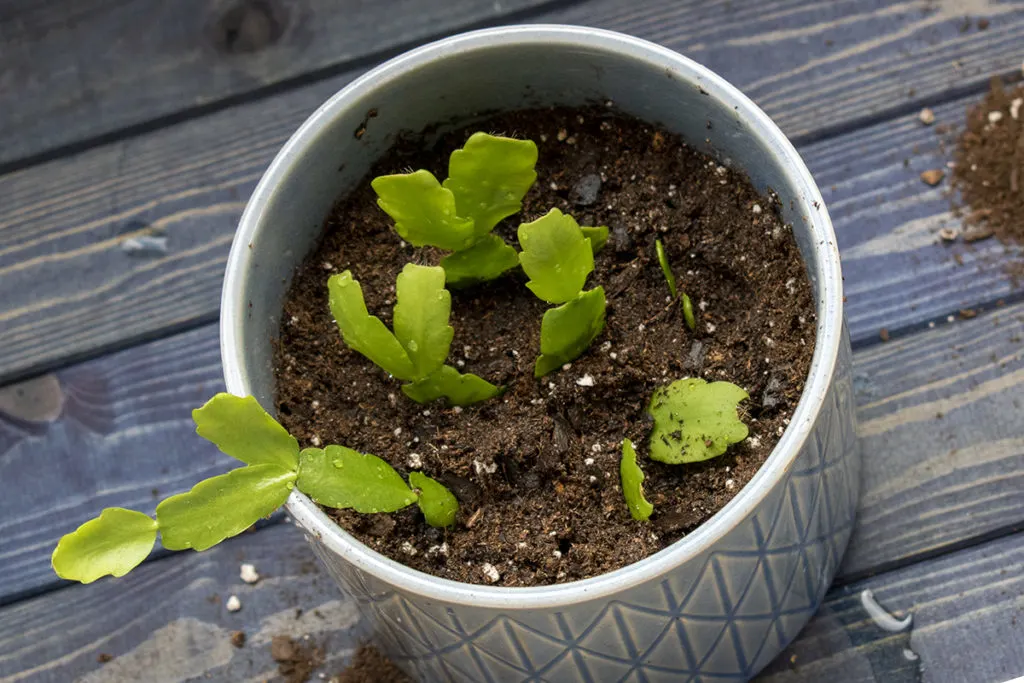
Water in your cuttings; be sure to let the pot drain completely. If the pot sits in a saucer, tip out any standing water.
Place your newly planted Christmas cactus where it will receive lots of bright, indirect sunlight. About a month later, you can begin a fertilizing regimen. Use a fertilizer made for blooming plants and feed the plant once a month at full strength or every other week at half strength. Flush the plant with pure water monthly to prevent the build-up of salts.
Don’t expect your new plant to produce many blooms in the first year. You may want to gently pull off any buds that do develop to encourage the plant to continue growing and branching out. After that, follow the general care and feeding of Christmas cactus to have a beautiful blooming plant that will last for decades.

Get the famous Rural Sprout newsletter delivered to your inbox.
Including Sunday musings from our editor, Tracey, as well as “What’s Up Wednesday” our roundup of what’s in season and new article updates and alerts.


